✨ Introduction – Why the Three Fishes Story Still Matters
Across centuries and continents, the Panchatantra has carried India’s oldest wisdom to the world. Long before printed books existed, parents told these animal fables beside oil lamps; teachers recited them in gurukuls; travellers carried them on trade routes. Among its many tales, “The Three Fishes Story in English” remains one of the simplest and most revealing.
It speaks about a lake, three companions, and a single moment of choice that separates safety from disaster. Beneath that calm water lies a truth that has guided generations — that foresight saves those who act while there is still time.
The author of the Panchatantra, Vishnu Sharma, wrote these stories nearly two thousand years ago to teach princes practical intelligence. He knew that moral lectures seldom touch the heart, but a good story always does. Today his lessons of cleverness, courage, and common sense have been translated into more than fifty languages.
Why does this particular Panchatantra moral story still attract readers? Because in every era we meet people like the three fishes — one who plans ahead, one who improvises, and one who never listens. The pond may have changed into an office, a classroom, or a home, but human nature remains the same.
So let us dive into the clear waters of this classic English moral story and meet the three unlikely teachers who still whisper ancient wisdom to modern minds.
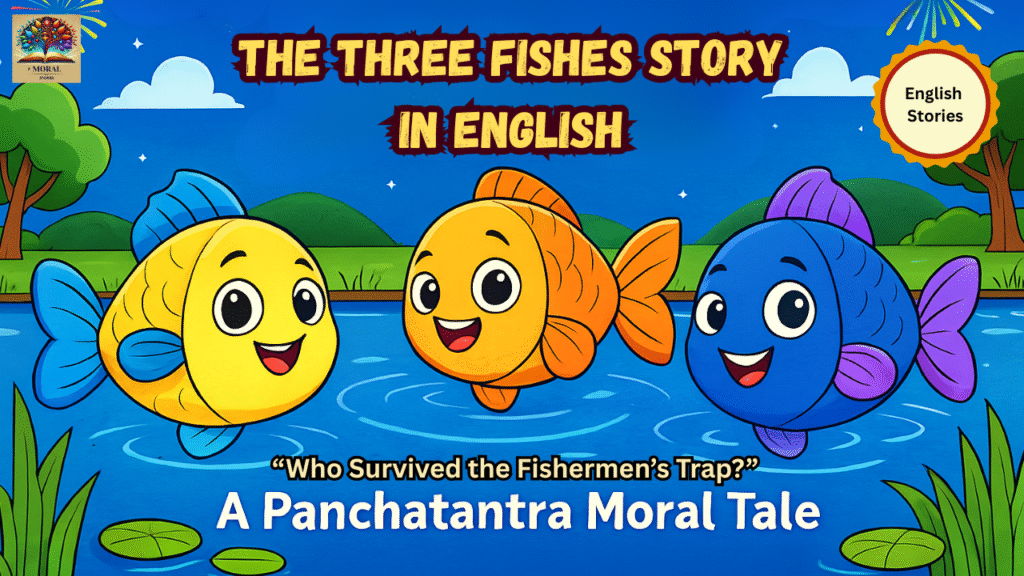
🐠 Meet the Three Fishes – Wisdom, Wit and Carelessness
In a quiet forest glade lay a lake so transparent that clouds seemed to rest upon it. Lotus flowers floated lazily; dragonflies hovered like sparks of sunlight. Inside this peaceful world lived three fishes, friends since birth yet different as dawn, noon, and night.
Anagatavidhata — The Planner of the Future
He was known for calm thinking. He could sense danger before others noticed a ripple. To him, every problem had a map and every storm, an anchor.
Pratyutpannamati — The Quick Thinker
Lively and bright-eyed, he trusted his speed more than planning. When trouble came, his mind darted like lightning; he always believed he could find a way.
Yadbhavishya — The Careless One
Easy-going and proud, he said, “Whatever is written will happen.” He laughed at worry and mocked caution.
Together they spent their days gliding through reeds, chasing bubbles, and telling stories of rain and moonlight. The world seemed eternal — until one ordinary afternoon changed everything.
⚠️ The Warning – Voices of Danger on the Shore
One evening, when the water reflected gold from the setting sun, the fishes heard footsteps. Two fishermen appeared carrying empty baskets. The taller one pointed at the shimmering water and said,
“Look how many fish live here! Tomorrow we shall return with nets and catch them all.”
Their laughter echoed across the pond like thunder before rain. Then they walked away, leaving silence and a trail of fear.
Anagatavidhata broke it first:
“Friends, we must leave tonight. When dawn comes, it will be too late.”
Pratyutpannamati flicked his tail.
“Maybe they’ll forget. If they come, I’ll think of something clever.”
Yadbhavishya yawned.
“Why spoil our evening? Humans come and go. Nothing will happen.”
But the wise fish’s eyes stayed fixed on the darkening sky. “The water feels different tonight,” he whispered.
🌌 The Night of Decision – Foresight Acts
When the moon rose like a silver coin, Anagatavidhata quietly swam to the far end of the lake, found a small stream that led to another pond, and slipped away. He looked back once; his friends were still playing in the moonlight.
Pratyutpannamati called after him, “You worry too much!”
But deep down even he felt uneasy.
All night he tossed between courage and doubt. “Should I go? Should I wait?” he murmured.
By dawn he had decided — to stay one more day.
Yadbhavishya slept peacefully, dreaming of endless safety.
🌅 The Return of the Fishermen – Panic in the Pond
The next morning glimmered pink when the fishermen came back carrying nets wider than shadows. Their shouts pierced the calm air.
“Spread the nets!” one yelled. “The big ones will fetch a good price!”
Water exploded as frightened fishes darted everywhere. Pratyutpannamati’s heart pounded. He remembered his friend’s warning and cursed his delay.
Within moments the nets closed around him. Thinking fast, he rolled his eyes, turned belly-up, and floated as if dead. “This one’s useless,” muttered a fisherman, tossing him aside. The moment he hit the water’s edge, he leapt into the stream and disappeared into freedom.
But Yadbhavishya rushed blindly in circles until the mesh wrapped around him like fate. He struggled, gasped, and fell still.
🌈 The Calm After Chaos
By noon the nets were empty; baskets full. The fishermen left singing of profit. Only ripples remained.
Far away, in the next pond, Anagatavidhata felt a sudden chill. He looked toward the direction of his old home and sighed. “Wisdom saves, but wisdom cannot save those who will not listen,” he whispered.
Later that evening, Pratyutpannamati joined him, weary but alive. They bowed their heads in silent grief for their lost friend.
Thus ended the tale of three fishes — one wise, one quick, one careless — a Panchatantra moral story that still swims through every classroom and conversation about foresight.
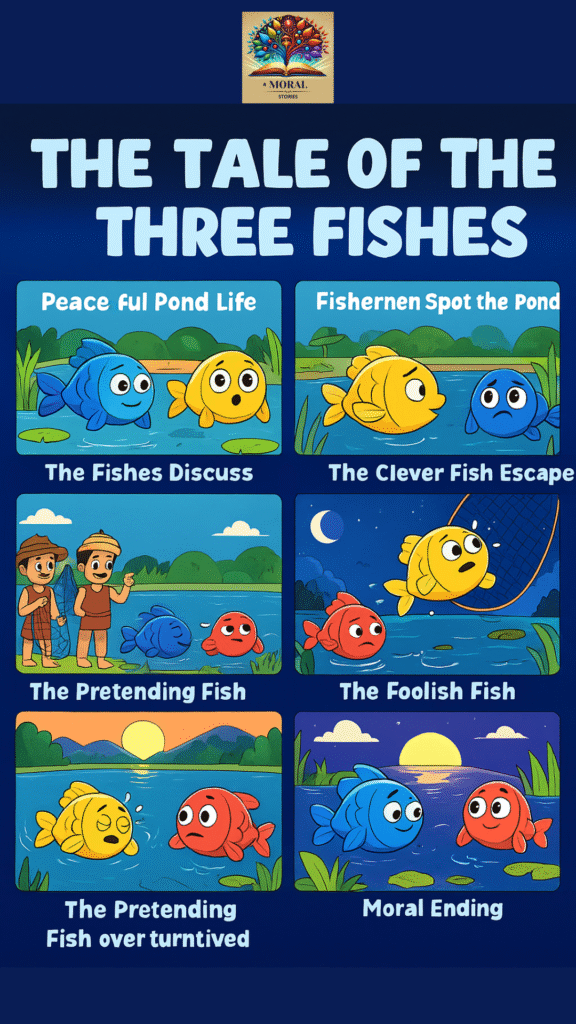
📜 The First Moral – Planning Before Crisis
“Those who foresee danger and act in time are truly wise.
Those who delay must struggle.
Those who ignore warnings meet ruin.”
This simple rule from The Three Fishes Story in English has guided farmers before storms, sailors before voyages, and students before exams. It teaches that intelligence is not just knowing what to do, but when to do it.
🌾 Symbolism of The Three Fishes Story in English
- Anagatavidhata (Planner): Represents visionaries, leaders, and anyone who prepares early.
- Pratyutpannamati (Quick Thinker): Symbol of adaptability and courage under pressure.
- Yadbhavishya (Careless One): Embodiment of ignorance, laziness, and blind faith in luck.
Together they mirror the three responses to every challenge — plan, react, or ignore. The outcome depends on which nature we choose.
🌍 Modern Relevance – What the Three Fishes Story Teaches Us Today
Even though The Three Fishes Story in English comes from ancient India, its message feels more urgent in our fast-changing world than ever before.
Today, danger doesn’t come in the form of fishermen — it comes as stress, deadlines, health issues, misinformation, and unpredictable life events. The pond has become our workplace, school, and social life.
Let’s see how each fish represents a type of person we still meet every day:
- Anagatavidhata (The Planner) – The person who saves money, studies early, and prepares for change. They rarely panic because they act before problems grow.
- Pratyutpannamati (The Quick Thinker) – The one who doesn’t plan much, but when problems appear, they stay calm and use creativity to escape trouble.
- Yadbhavishya (The Careless One) – The person who says, “I’ll handle it later,” until “later” is too late.
The story teaches that planning early gives freedom, while ignoring signs brings regret.
🧠 How This Panchatantra Moral Story Applies to Everyday Life (The Three Fishes Story in English)
- In School:
Students who prepare a little every day (like the wise fish) enjoy exams calmly. Those who wait until the last night often panic (like the careless fish). - In Work:
Professionals who update their skills regularly never fear layoffs or change. Those who depend only on luck struggle when challenges arise. - In Family Life:
Parents who plan for the future—education, health, and savings—secure peace for everyone. - In Relationships:
Listening, communicating, and solving small problems early prevent big ones later. - In Society:
Leaders who think ahead save communities from crises, just like the wise fish saved himself.
Thus, the Three Fishes Story is not just for children — it is a mirror for every adult who faces life’s uncertain waters.
📘 More Stories :
- The Foolish Lion and the Clever Rabbit Story in English | Panchatantra Moral Story for Kids with Summary, Moral and Life Lessons
- 🦆➡️🦢The Ugly Duckling Story in English – A Touching Moral Tale for Kids
- The Cap Seller and the Monkey Story in English | A Moral Story for Kids with 12 Smart Life Lessons
- 🐑 The Three Sheep and the Monster Story in English – Monster Trapped by Teamwork
- The Ant and the Grasshopper Story in English – A Moral Tale on Hard Work and Preparation
- The Sun and the Wind Story – A Timeless Moral Story for Children and Adults
📜 15 Life Lessons from The Three Fishes Story (Panchatantra Moral Tale)
- Foresight saves lives – Plan before problems arise.
- Courage follows wisdom – The brave act after thinking.
- Delay is dangerous – Time lost cannot return.
- Luck helps only those who help themselves.
- Adaptability is strength – Learn to adjust when plans fail.
- Arrogance destroys wisdom – Never ignore advice.
- Teamwork needs understanding – Respect every friend’s point of view.
- Preparation is protection – Even calm times hide risk.
- Every warning is a chance to change.
- Acting too late brings sorrow.
- Listening is learning.
- Smart work beats panic.
- Foresight is better than hindsight.
- The wise lead quietly, by example.
- Nature rewards awareness.
These lessons make The Three Fishes Story in English one of the most powerful moral stories for kids and students ever written.
🌸 Cultural Background – The Wisdom of Panchatantra
The Panchatantra, written by Vishnu Sharma around 200 BCE, is not just a children’s book — it’s the world’s first guide to emotional intelligence and strategy. Each story uses animals as mirrors of human behavior, teaching how to live wisely and peacefully.
The name Panchatantra means “Five Treatises” or “Five Principles.” Each section teaches a different life skill:
- How to make friends
- How to keep them
- How to face loss and gain
- How to avoid foolish actions
- How to live balanced and moral lives
The Three Fishes Story in English belongs to the section “Loss of Friends” — but its real focus is loss through ignorance.
From India, the Panchatantra travelled to Persia as Kalila wa Dimna, then to Arabic, Greek, Latin, and finally into almost every modern language. It inspired Aesop’s Fables and many European moral stories.
So when a child reads this small fish tale today, they unknowingly touch a river of wisdom that has flowed across cultures for more than two thousand years.
The Fox and the Grapes Story in English | Short Moral Tale for Kids (Aesop’s Fable)
🪶 Deep Interpretation – The Philosophy Behind the Pond
Each fish in the pond represents a mindset:
| Fish | Symbol | Modern Meaning |
|---|---|---|
| Anagatavidhata | Vision | Long-term planner; one who sees beyond today. |
| Pratyutpannamati | Action | Problem-solver; one who reacts quickly to challenges. |
| Yadbhavishya | Ignorance | One who avoids responsibility; relies only on fate. |
The pond itself is the world, calm on the surface but full of unseen threats.
The fishermen represent time and consequences, which eventually visit everyone.
The message is clear: Fate favors those who prepare.
🏡 Activities for Parents, Teachers, and Students
- 🎨 Draw the Pond: Ask kids to draw the three fishes showing different emotions.
- 🧠 Role Play: Students act as the three fishes and discuss whose choice was right.
- 📖 Creative Writing: “If you were the fourth fish, what would you do?”
- 💬 Classroom Discussion: How can we be like the wise fish in real life?
- 🕯️ Reflection Activity: Write one mistake you made by not planning ahead — and what you learned.
- 🧩 Word Game: Make a word cloud of morals (wisdom, courage, foresight, planning).
These simple classroom ideas make the Panchatantra story in English interactive and memorable.
❓ FAQs About The Three Fishes Story in English
Q1. What is the moral of the Three Fishes Story?
👉 Always plan before problems come. Foresight and wisdom lead to survival.
Q2. Who wrote this story?
👉 It was written by Vishnu Sharma as part of the ancient Indian text Panchatantra.
Q3. Why is the story still relevant today?
👉 Because even in modern life, people who prepare early succeed while careless ones fail.
Q4. What do the three fishes represent?
👉 The wise, the clever, and the careless — three types of human behavior.
Q5. Is the story good for kids?
👉 Yes. It’s simple, fun, and teaches planning, responsibility, and quick thinking.
🧩 Vocabulary for International Readers
| Word | Meaning |
|---|---|
| Foresight | Ability to think ahead |
| Wisdom | Deep understanding and good judgment |
| Foolishness | Lack of sense or understanding |
| Adaptability | Ability to change according to situation |
| Consequence | Result of an action |
| Survival | Continuing to live or exist |
| Moral | Lesson taught by a story |
| Panchatantra | Ancient Indian book of fables |
🎥 YouTube Channel Subscribe CTA
👉 Subscribe to our YouTube channel for more fun moral stories for children!
🔗 YouTube Channel – A Moral Stories (English)
Enjoyed this heart-touching tale? Subscribe to our YouTube Channel “A Moral Stories” to enjoy more moral stories for kids in English, animated and narrated with love! 🌟📺
Also available in:
🔹 Gujarati – A Moral Stories Gujarati
🔹 Hindi – A Moral Stories Hindi
✨ Final Thoughts – The Eternal Wisdom of the Three Fishes Story
Every great story hides a piece of truth. The Three Fishes Story in English hides one of life’s simplest yet hardest lessons — think before you act.
The lake may look peaceful today, but danger can arrive tomorrow. Those who prepare enjoy calm waters; those who wait drown in regret.
For children, this story is about three colorful fishes.
For parents, it is about guiding choices.
For leaders, it is about vision.
For everyone, it is about survival through awareness.
Like The Dussehra Story, this Panchatantra tale celebrates victory — not of one hero over another, but of wisdom over carelessness, discipline over laziness, and truth over ignorance.
So next time you face uncertainty, remember the three fishes.
Ask yourself — which one am I today?
The wise who plans, the clever who reacts, or the careless who drifts?
Because life, like that pond, rewards only those who swim with awareness.
🌊 “Foresight is the lamp that lights our path through dark waters.”
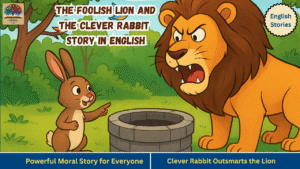
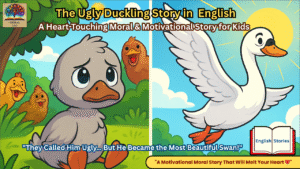
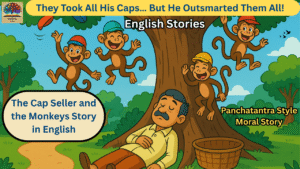
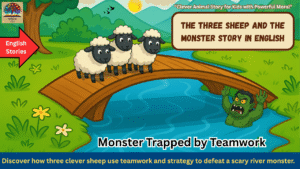




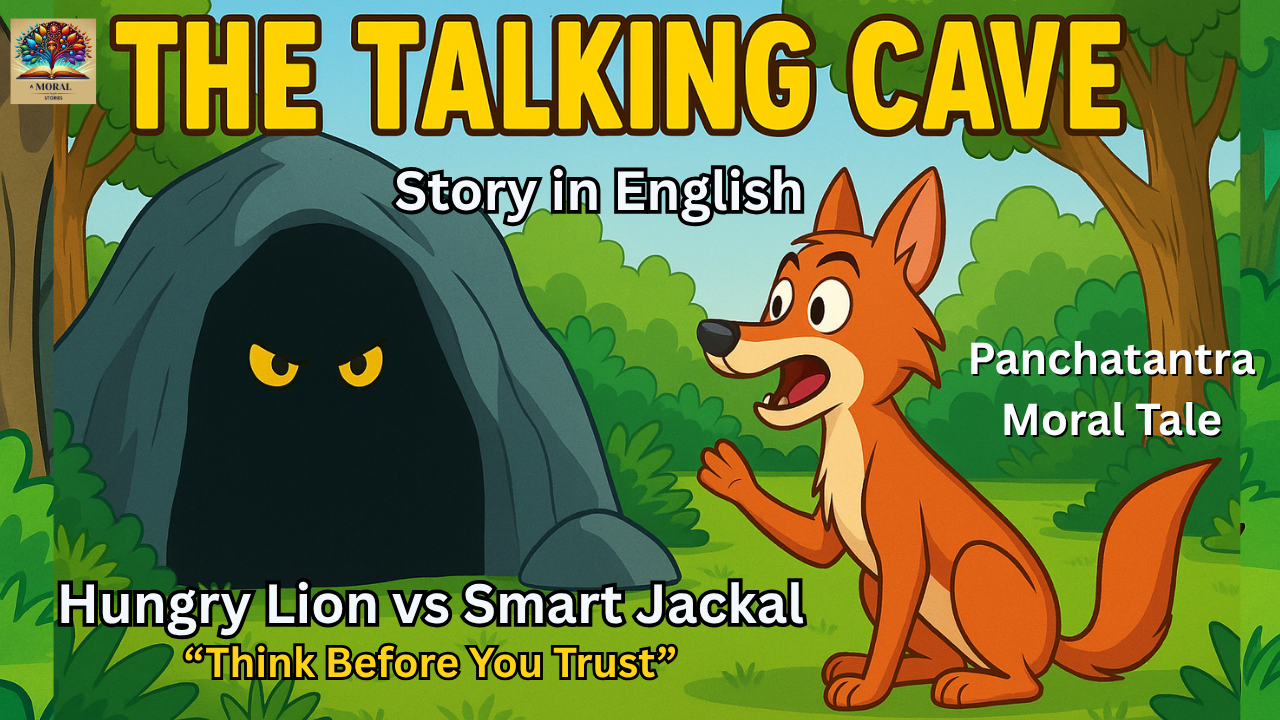

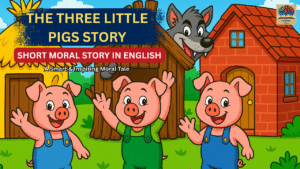
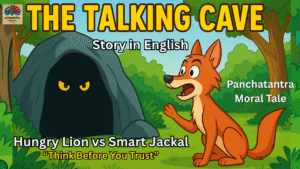

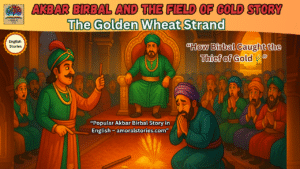
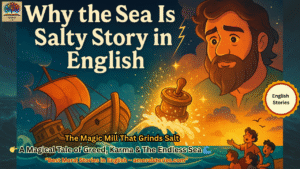
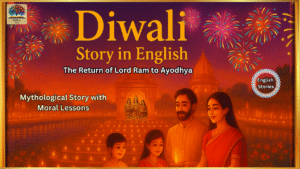
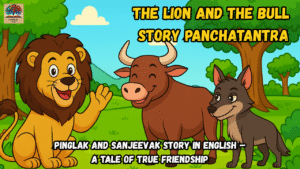
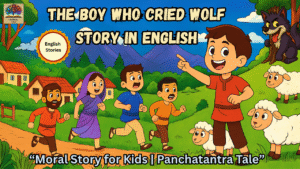

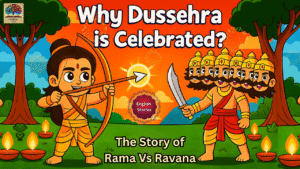

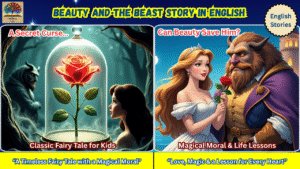
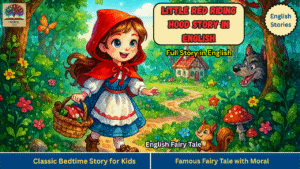
Post Comment